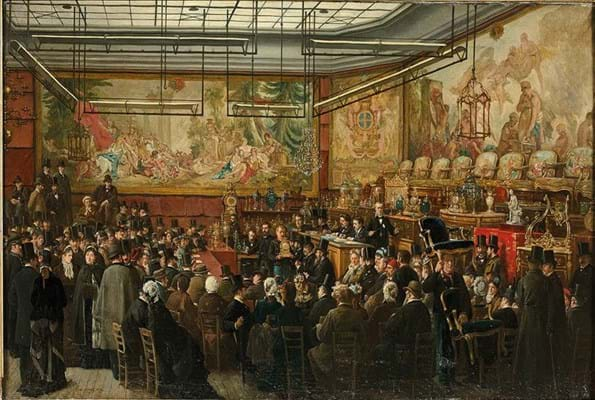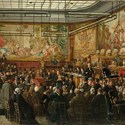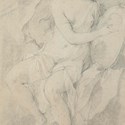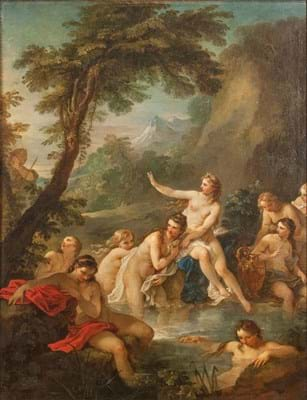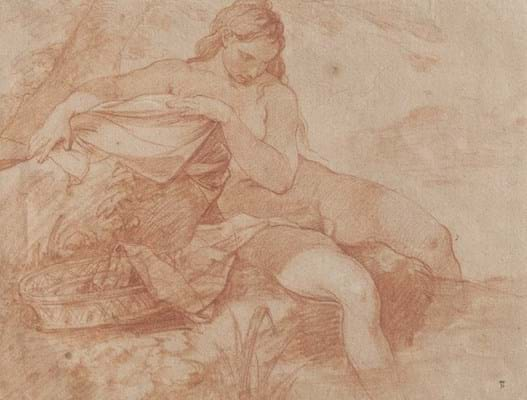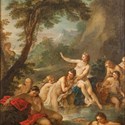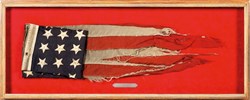Drouot is one of the oldest public auction institutions in the world. It has been catering for Paris’ centuries-old auction scene at the same site in the right bank 9th arrondisement since the 19th century. There was a brief interlude in the 1970s, when it decamped to the old Gare D’Orsay, while the building was reconstructed in its current form.
Results for French paintings in the recent sales included a depiction of Drouot’s own auction history from 140 years ago.
A work offered in a mixed-discipline sale held by Beaussant Lefèvre (25% buyer’s premium) on June 22 harked back to 1876. It showed an auction in progress at the former building on the site that year.
The signed and dated 2ft x 3ft (61 x 90cm) oil on canvas by Eugène Benjamim Fichel (1826-50), a French artist known for his detailed genre scenes, was exhibited at the Salon the following year.
The subject was the attraction here. The crowded scene features the auctioneer at the rostrum and a mass of top-hatted bidders and spectators in a room hung with tapestries and with pieces of classic French furniture and objets d’art visible along the walls.
The painting, which expert Amaury de Louvencourt described as “an historic document”, attracted interest, understandably, from a number of auction professionals as well as art collectors. It sold at a hammer price of €80,000 (£72,730).
This is a record for the artist, surpassing substantially the previous high, a premium-inclusive £19,700 paid at Sotheby’s London rooms in 2008 for The Musicians.
Incidentally, two of the people in the crowd have been identified. According to family tradition of the vendors, the two men in top hats standing in front of a red lacquer cabinet are Charles Guénot and his cousin Parguez.
Charles Guénot the elder was the mayor of Montrouge near Paris, while his son, also named Charles, was an administrator for the firm of Fichet that produced bank safe deposit boxes.
Natoire on canvas and paper
Born in Nîmes in the south of France in 1700, Charles-Joseph Natoire moved to Paris to study but then spent long periods of his career in Rome, where he died in 1777.
He had a number of important royal and other commissions between his visits to Italy when he was established in Paris.
On June 14 a mixed-discipline sale held by Delorme & Collin du Bocage (25% buyer’s premium) featured a Natoire work painted when he was at the height of his career.
Diana bathing surprised by Acteon is a classic rendition of the subject taken from Ovid’s Metamorphosis and showcases the artist’s talents, depicting an array of female nudes in the foreground set in a well-rendered bucolic landscape.
The 4ft x 3ft (1.2m x 91cm) oil on canvas, which is signed and dated 1742 and was shown at the Salon, has a provenance back to 1785 as part of the Vente Godefroy in Paris.
The €100,000-150,000 estimate for Diana bathing… was overturned as the bidding sailed to an impressive €610,000 (£554,545).
The subsequent lot was a red chalk study for this painting showing the nymph in the foreground seated on a rock with red drapery. This work bore a collector’s stamp for Comte JP van Suchtelen and realised €11,000 (£10,000) against a €7000-9000 estimate.
Another of Natoire’s works on paper was purchased on the same day at Drouot by the Bibliothèque Nationale in a sale held by Artcurial (25/20/12% buyer’s premium).
The library exercised its right of pre-emption to secure a chalk drawing of Thalie or La Comedie executed in black chalk and stump with white highlights on blue paper stepping in to claim it at the fall of the hammer for €2200 (£2000).
The Bibliothèque Nationale had an obvious reason for its interest in this drawing.
In 1745 Natoire was commissioned by the Bâtiments du Roi to decorate the Cabinet de Medailles of Louis XV (this was the period when the bilbliothèque was a royal library in a building on the Rue de Richelieu where the painting is still in situ) in the centre of Paris.
This 14 x 9in (36.5 x 23.5cm) work was a study for the figure of Thalie in the painting for the cabinet, so both works can now be reunited.
£1 = €1.1


